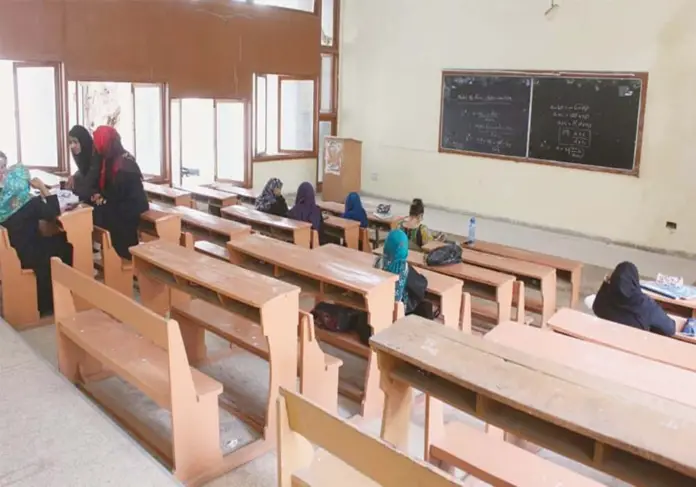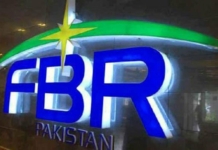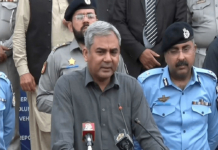The Higher Education Department has notified 25 percent Disparity Reduction Allowance to university employees from grade 1-19, said a notification issued on Thursday.
The 25 percent allowance for teachers and employees of all the public sector universities of the province had already been approved by Chief Minister Usman Buzdar in October this year.
The said allowance will be based on the basic salary and those who draw any other specific or cadre allowance will not be eligible to get this allowance. Allowances like Qualification Allowance, Sr Post Allowance, Special Conveyance Allowance, Mobility Allowance, Charge Allowance are not cadre specific allowances. Hence, those employees who are recipients of such allowances are entitled to the Special Allowance-2021.
The standing committee of the cabinet on finance and development approved this allowance on November 15 this year. Those employees or faculty members who are drawing a fixed salary will be eligible to take this allowance. Moreover, tenure track teachers will not be given this incentive. This special allowance will only be given after approval of the syndicate in view of the available resources as the government denied providing any additional grant in this regard. The HED also stopped the varsities from increasing tuition fees to cope with these additional expenditures.
It is worth mentioning here that a delegation of the vice-chancellors led by Punjab University Vice Chancellor Dr Niaz Ahmad Akhtar called on CM Buzdar in October. The VCs briefed him about the financial crunch faced by the university staff due to the non-provision of disparity allowance.
Moreover, Professor Dr. Asghar Zaidi, the vice chancellor of Government College University Lahore, requested the governor of Punjab, Chaudhry Sarwar, for approval of the disparity allowance 2021 for employees of his university in order to reduce discrimination in salaries.
Professor Zaidi wrote that “a structure of Unified PayScale was established in 1972 for all government servants. However, since 2009, disparities in salaries have occurred after various government establishments were allowed 100pc to 300pc of the basic pay as allowance”. The Punjab government had announced a 25 percent disparity reduction allowance to its employees except those of the autonomous bodies, including universities.
But, a protest had been started by the Federation of All Pakistan Universities Academic Staff Association (FAPUASA), Punjab chapter. Moreover, the faculty had threatened to boycott academic activities if the government did not approve this incentive to them. Later, the All Pakistan Clerks Association (APCA) joined hands with the faculty. The Punjab government surrendered and approved the said demand.
In view of the GCU VC’s letter that disparities in salaries have occurred since 2009 as some establishments were allowed 100 percent to 300 percent allowances, there is a serious question of discrepancy and disproportion. Since the PTI government took over in Islamabad and Lahore, the discrepancies have been on the rise. No one questions the service delivery. All those sectors who used pressure tactics using street power or trade union shows got benefits.
Doctors and engineers got special allowances as they blocked roads and boycotted outdoors and the government had to succumb to their demands. The executives, including the provincial management service and Pakistan Administrative Service officers, were also given a special allowance. Grant of executive allowance was 1.5 times the basic pay to all officers working on the cadre strength. Later, the Punjab government approved the same for the police officers. Officers serving in south Punjab were given additional benefits in addition to this allowance.
The PTI government had earlier given the highly controversial raise to the political elite of Punjab. Punjab Assembly reportedly raised the salary of the chief minister, MPAs from Rs83,000 to Rs200,000 per month. Later, the Buzdar administration raised the running basic pay of the bureaucratic elite by 150 percent.
It was the start of discrimination when the province, which has over two million employees, had granted this huge raise to only 1,700 officers of the federal and provincial management services ignoring all others, including teachers and non-gazetted employees. Previously, only Punjab CM’s Office and Governor’s House officers were given this incentive.
A teacher, Ali Muhammad, had told media that the government’s salary structure was distorted and different departments were already withdrawing special allowances, such as judicial allowance, and a special allowance of FBR, NAB, FIA and Anti-Corruption Establishment, etc.
He said the government should introduce key performance indicators, check service delivery and then award incentives. No Pakistani university falls in the top 100 universities of the world, he said.
Dr. Usman, another government official, said that the rise in salaries was good but the government should equally increase salaries across the board. He said that only those officers whose service delivery was at par with good governance initiatives be allowed to draw such hefty allowances.







